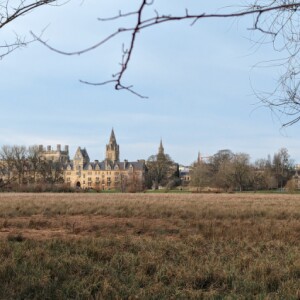Ashes to Ashes
The main road that heads due south out of Oxford centre is called St Aldate's. There is a track, a pathway, that heads east from St Aldates. It skirts outside the walls of Christ Church college and south of the walls of neighbouring Merton college, then cuts up beside the Botanic Garden, reaching the High Street as it crosses the river Cherwell and heads East out of the city, heading for London
For some of its length, the track is called 'Deadman's Walk'. Some think this is because of a tradition that the ghost of a civil war Colonel - executed there - appears on the track (only from the knees up, due to the change in the height of the ground!), but the track pre-dates the war, and indeed pre-dates the foundation of the colleges it shadows
When William of Normandy colonised England, he brought with him Jewish people who were established bankers and financiers. The Roman church did not permit the lending or borrowing of money with interest (the sin of 'usury'), and the hypocritical work-around for those who needed to do so, was to use Jewish people as intermediaries in such transactions. William needed large sums to consolidate his colony, so he needed the Jews
Many Jews settled in Oxford. St Aldate's at the time was called 'Great Jewry Street'. With no small irony, a network of underground tunnels, linking the Jewish houses in that part of the city has recently been discovered. Jews were not, however, permitted a cemetary within the city boundary, nor were their funeral processions permitted to pass through the city streets. The Jewish cemetary was on the north side of the London road, also beyond the city wall, of course. The Deadman's Walk is the extramural route of the funary processions from the Jewish quarter to their burial ground
Anti-semitism flourished in England, and all Jews were expelled from the country in 1290 - the first European state to do so. Their cemetary was eventually built on by Magdalen college. But their 'coffin road' remains - one part of our circular walk around Christ Church meadow. The extra is a long view of the two colleges from the south, with the path this side of their walls
Our lunch time cafe commemorates a much more recent history. Greek food in the covered market. It has been there for over 40 years, celebrating the coffee bars of the 50s, 60s and 70s. As one review puts it "This is the only coffee bar in Oxford that any self respecting beatnik would be seen in"


Comments
Sign in or get an account to comment.


